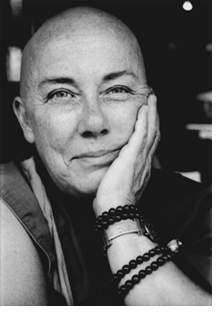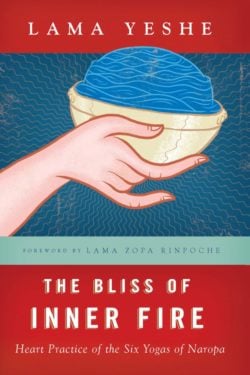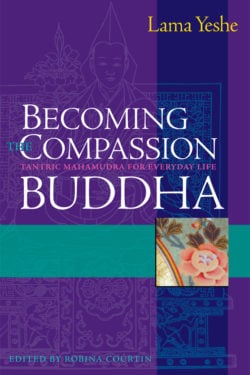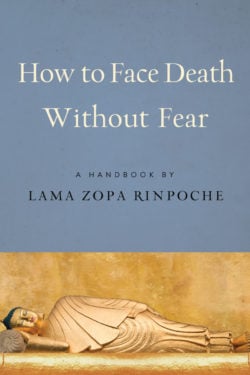Robina Courtin

Ordained since the late 1970s, Ven. Robina has worked full time since then for Lama Thubten Yeshe and Lama Zopa Rinpoche’s FPMT. Over the years she has served as editorial director of Wisdom Publications, editor of Mandala Magazine, executive director of Liberation Prison Project, and as a touring teacher of Buddhism. Her life and work with prisoners have been featured in the documentary films Chasing Buddha and Key to Freedom.
Books, Courses & Podcasts
The Bliss of Inner Fire
In the classic bestseller, Introduction to Tantra, Lama Yeshe offered a profound and wonderfully clear glimpse into the sophisticated practices of Tibetan Buddhist tantra. This present book, the last major teachings of this great lama, opens up the world of advanced practices for Highest Yoga Tantra initiates in much the same way his earlier work opened up the world of tantra in general.
Following Je Tsongkhapa’s (1357-1419 C.E.) text Having the Three Convictions, Lama Yeshe introduces the renowned Six Yogas of Naropa, focusing mainly on the first of these six, the practice of inner fire (tummo). Mastery of inner fire quickly brings the mind to its most refined and penetrating state—the experience of clear light, an extra-ordinarily powerful state of mind that is unequaled in its ability to directly realize ultimate reality.
Lama Yeshe felt that twentieth-century Westerners could easily grasp the often misunderstood ideas of this esoteric tradition: “We really need tantra these days because there is a tremendous explosion of delusion and distraction.and we need the atomic energy of inner fire to blast us out of our delusion.”
Lama Yeshe’s aim was for his students to actually taste the experience of inner fire rather than merely gain an intellectual understanding. Lama’s own realization of the transformative power of these practices comes through, inspiring his students to discover for themselves their own capacity for inexhaustible bliss.
Read Tsongkhapa’s biography at the Treasury of Lives.
Becoming the Compassion Buddha
Not only was Lama Yeshe one of the most beloved Tibetan Buddhist masters of the late twentieth century, he was also a remarkably effective teacher and communicator. In Becoming the Compassion Buddha, just as he did with his bestselling Introduction to Tantra, he once again demonstrates his extraordinary ability to present practices that once were considered arcane or hidden in a way that is clear and understandable to the general reader.
In these pages, Lama Yeshe guides readers through the tantric practice of Avalokiteshvara, the Buddha of Compassion, basing his instructions on a text written by His Holiness the Dalai Lama at age nineteen. He gives special emphasis to mahamudra, the emptiness of one’s own mind, and demystifies these esoteric techniques, clearly showing them for what they are: highly developed psychology. Throughout, Lama Yeshe presents his approachable teachings by drawing on examples from daily life and introducing meditation practices that all can follow. Becoming the Compassion Buddha is an extraordinary book that opens new doors for countless readers.
How to Face Death without Fear
“Helping our loved ones at the time of death is the best service we can offer them, our greatest gift. Why? Because death is the most important time of life: it’s at death that the next rebirth is determined.”—Lama Zopa Rinpoche
For years Lama Zopa Rinpoche envisioned a practical book to inform students of how to help loved ones have a beneficial death. How to Face Death without Fear has been compiled from years of Rinpoche’s teachings and has been lovingly edited by Venerable Robina Courtin.
Rinpoche provides detailed advice on how to help your loved ones prepare for the end of their life with courage, acceptance, and a mind free of fear. With great care, he explains what to do in the months, weeks, and days before death, how to handle the moment itself, what to do after the breath has stopped, and finally, what to do after the mind has left the body. Rinpoche provides the mantras, prayers, and meditations appropriate for each stage. This new edition of Rinpoche’s modern classic How to Enjoy Death makes it easy for the reader to find the right practice at the right time.
This handbook is an essential reference for Tibetan Buddhist caregivers, hospice workers, and chaplains. But, as Rinpoche points out, it is not only for people who work with the dying; it is education we all need.
You’ll find solace in this wealth of advice, and you’ll also gain the confidence to ensure that your loved one’s death—and your own—will be joyful and meaningful.



